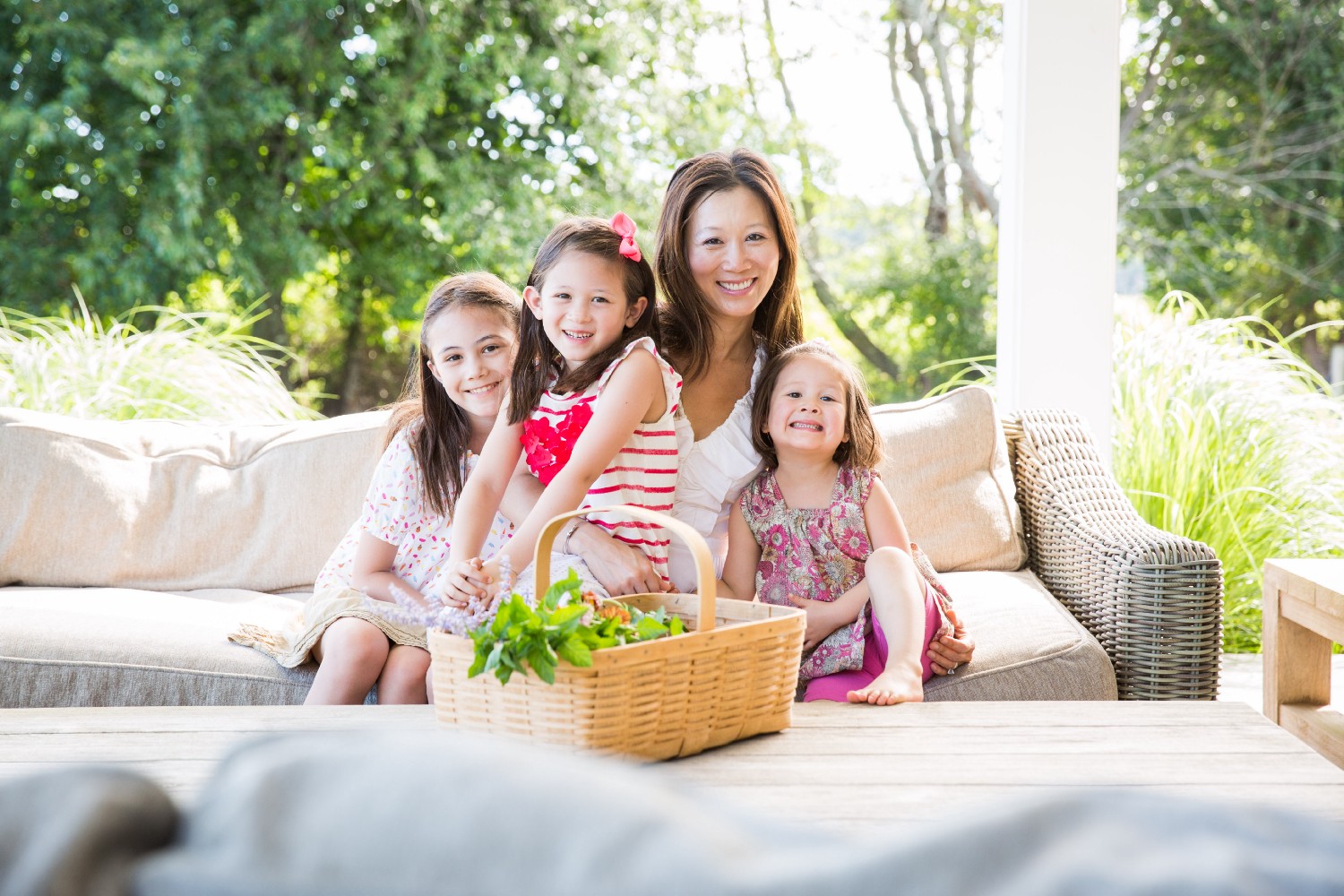In high school, I was known as the healthy one because I ate well and exercised a lot. This always made me wonder, Then why do I feel so bad?
Decades later, I would discover an unknown pillar of health and wellness: toxic exposures from consumer products. After D-Toxing my life (“editing” my life to reduce my family’s toxic exposures), I’ve never felt better.
“Few people can say that they’ve always ate healthy and exercised a lot.” — a friend
My earliest memory of being interested in health is from 4th grade. I was in my bedroom, flipping through a health and beauty magazine. I lit up when I encountered a blurb about how antioxidants in carrots and berries help our bodies. This launched a lifelong interest in how food can help us repair, restore, and even glow: beta-carotene for our eyes, omega-3 fatty acids for our skin and hearts, and B complex vitamins for our energy, memory, and more!
I was lucky. While my mother and brother enjoyed eating lots of meat and fried foods, my father and I enjoyed eating vegetables, fruits, seafood, and rice.
I also loved exercise. I loved elevating my heart rate until I experienced the endorphin-highs that prolonged cardio exercise brings. And I loved sweating until my workouts felt thoroughly cleansing from the inside out. While I didn’t enjoy tennis until my 40s, I was forced to play a lot as a kid, even playing varsity tennis from 7th to 12th grade. I generally exercised about two hours a day.
I ate well. Exercised a lot. Had healthy stats: weight, blood pressure, and cholesterol. Yet, why did my energy feel so low? And why would my blood-sugar suddenly plummet? I experimented with diet fads: low fat/high carb; high protein/low carb; and calorie restriction. Nothing helped.
At age 10, I was the second youngest girl in my grade to start my menstrual cycle. In the early 1980s, this was unusual. Today, it’s increasingly common, and is described as precocious puberty. My menstrual cycles were so irregular that I was rarely prepared for its start, I was in deep pain and discomfort once it did, and its duration ranged from 7 to 14 days. My father, an obstetrician/gynecologist, put me on birth control pills at age 15 to regulate and moderate my hormones.
Hormone-disrupting chemicals from our consumer products?
In 2007, I became a mother at age 34. I was working full-time in investment management, and staying up until early hours in the morning to pump breastmilk and review literature on best practices to raise my baby. I encountered a warning about hormone disrupting chemicals (like bisphenol A, or BPA) in some baby bottles and a carcinogen in some baby bottle nipples. Shocked, I thought, This could not be true. If this were true, then someone — my OBGYN, pediatrician, or someone in the maternity ward — would have warned me. Right?
Unable to ignore these claims, I researched whether credible sources supported these warnings. By 2am, they were verified.
By 4am, I identified alternative products for my daughter.
By 4:10am, I noticed that I was exhausted.
By 6am, I’d have to start my day, if my daughter didn’t wake us up sooner.
This event predated the BPA scare that was widely publicized circa 2009, which has been considered “resolved” with BPA-free products. I also used BPA-free products for a while. But, as I wondered about the purpose of BPA, I also wondered whether BPA-free formulas were safer. The possibility of feeding my children hormone-disrupting chemicals was unsettling enough that I kept digging. Years later, studies would show that some BPA-free products create more hormone-disrupting activity than BPA! In fact, I would discover a historical pattern of substitute chemicals sometimes being at least as threatening as the harmful chemicals they replaced.
My first experience of investigating a toxic chemical in some baby bottles was the rabbit hole that launched more than eight years of research on how to protect my family from toxic exposures. I continue to be shocked by what I learn.
“No one should have to learn about this the way that I did.” — author of A to Z of D-Toxing
I hated the way that I had to learn about my family’s toxic exposures: accidentally, usually when I should have been sleeping, with no holistically-informed guidance to navigate conflicting information, with regret for having already exposed my children to health risks that I could have avoided, after buying things that I would eagerly discard, and through more research (including trial-and-error with alternative products) than any person should have to pursue.
Through two more pregnancies and parenting, my children’s biological vulnerabilities were obvious to me. While studies on the health risks from toxic exposures from consumer products — hormone disrupting chemicals, carcinogens, neurodevelopmental toxicants, reproductive toxicants, immunotoxicants, and more — was fascinating and convincing, common sense also urged me to protect my children from unnecessary exposures.
At age 43, I’ve never felt better. And I’m far from perfect! As a full-time working mother of three, I don’t sleep and exercise enough. My diet is healthy (but not perfect!). I also stopped taking birth control pills a decade ago. And my menstrual cycles start every 28 days and last about five days with no discomfort. One glaring change: I’ve hacked my toxic exposures.

In my book A to Z of D-Toxing: The Ultimate Guide to Reducing Our Toxic Exposures, I share what I wish I knew sooner on this topic. I wrote and designed it to be the go-to handbook for a head of a household (my younger self). Since publishing it in October 2015, I’ve continued to spread awareness on many platforms. I am thrilled and honored to have Thrive Global’s audience to empower more people with my broader perspective on health and wellness. Please check in regularly, or follow me, for more to come on practical nontoxic living!
Originally published at medium.com


